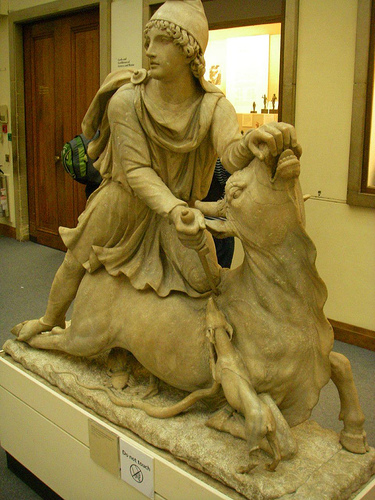
The pity is that Bart Ehrman did not know (or perhaps he did!) the argument he was thus evaluating — his own, in fact — just happened also to be the same one Earl Doherty covered in Jesus: Neither God Nor Man. For some reason psychologists no doubt can explain, when Ehrman read the same points he himself had written being elaborated upon by Doherty he saw red and declared everything to be false, not true, rubbish. But take a peak at what Ehrman himself wrote about the mystery religions and see if you can spot the difference from Doherty’s argument. How are we to explain Ehrman’s contradictory evaluations?
In his attack on the very idea that Jesus may not have been an historical person Ehrman blasted away at any suggestion by “mythicists” that the pagan mystery cults had any influence at all upon the emergence of the Christian religion:
One thing that we do know about them [i.e. the mystery cults], however, is where they were located and thus, to some extent, where they exerted significant influence. We know this from the archaeological record they have left behind. Among all our archaeological findings, there is none that suggests that pagan mystery cults exerted any influence on Aramaic-speaking rural Palestinian Judaism in the 20s and 30s of the first century. And this is the milieu out of which faith in Jesus the crucified messiah, as persecuted and then embraced by Paul, emerged. . . . (p. 256, Did Jesus Exist?, my emphasis)
The question-begging core of this assertion is even comical. Ehrman is supposedly attacking an argument that posits mystery religions in the wider Greek-speaking world influenced the shape of emerging Christianity, particularly as taught by Paul, so he protests that the mystery religions did not influence the teachings of Jesus wandering around in Galilee!
But then Ehrman becomes even less logically relevant as his desperation grows: Continue reading “Ehrman says Doherty’s argument is “intriguing and worthy of reflection””
